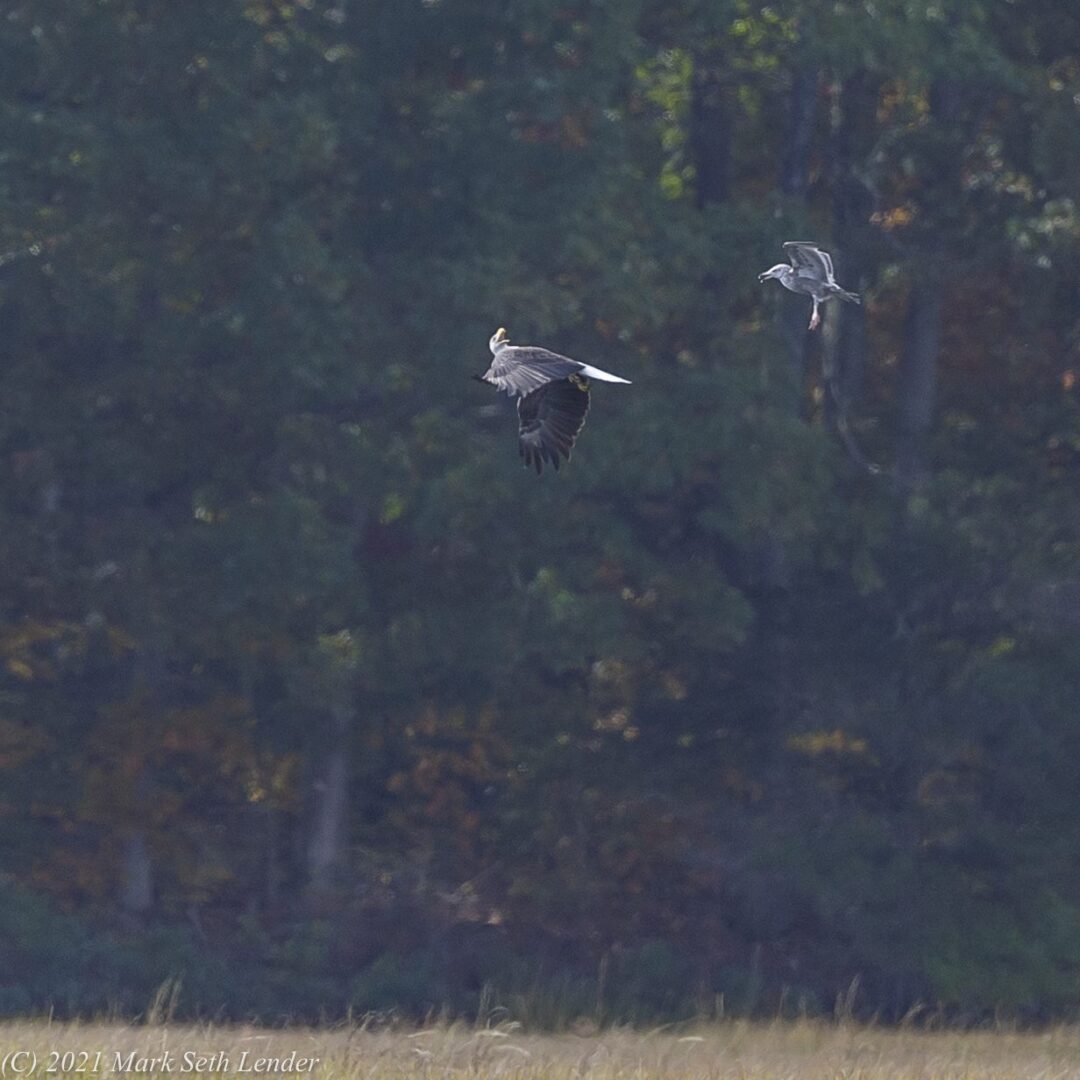WESTBROOK — The swooping bald eagle hunting above the marshy river is interrupted by a winged invader intent on disrupting the bigger bird’s afternoon meal plans.
Rising aloft above the brawny eagle and then plunging down toward it yo-yo fashion time after time, the identity of the aggressive, slender-winged white bird is at first elusive to the wildlife photographer shooting the spectacle from the river’s edge.
Is it an osprey? A hawk?
After several adrenalized minutes and countless audible clicks of his long-lensed, camouflaged camera, photographer Mark Seth Lender finally recognizes the intruder that started the aerial wrestling match in the federal Stewart B. McKinney Wildlife Refuge.
“It’s a gull!” he calls out with a burst of exuberance. “A herring gull!”
Lender is a longtime public radio journalist and Clinton resident specializing in wildlife stories that have sent him all over the planet to encounter untold species of animals and the human cultures around them.
He believes the 1,000-acre McKinney refuge and its inhabitants are underappreciated, if not unknown, to the majority of the dense population that surrounds it, and he wants to encourage potential visitors to “open their eyes” to its easily-accessible grandeur.
“So if you had driven out here today from New York City or down here from Hartford, not only do you get an adult bald eagle hunting, you get a herring gull telling him to stay the hell out of my territory,” Lender says as he hikes back to his pickup along the refuge’s well-groomed trails. “That’s not a bad afternoon.”
He unashamedly admits he gets ramped up at the sighting of just about any animal in its natural habitat.
But gulls, they’re another matter entirely.
Nearly 15 years ago, a herring gull started pecking at the sliding glass door of Lender’s nearby waterfront home, looking for food from the humans inside.
That same gull, he says, still comes to his house almost every day, and has been transformed by Lender into Smeagull, the main character of a wildlife guide to the refuge that is his passion.
He is intent on using the guide and an associated website to promote awareness of the McKinney refuge, which extends along 70 miles of Connecticut coastline from Westbrook to Norwalk in 10 distinct “units,” including eight islands.
A breeding and stopping point on the Atlantic Flyway, the refuge hosts an array of species of wading birds, shorebirds, songbirds and terns, including the endangered roseate tern, herons, and of course, bald eagles.
It’s part of the National Wildlife Refuge System, which Lender said encompasses more than twice the area of the national park system, but receives far less funding.
Lender’s partner in the guide project and others is the Friends of Stewart B. McKinney Refuge, a non-profit for which Smeagull serves as mascot.
He also has created a non-profit that he said will raise funds to produce the next printing of the guide with an eye toward distributing them in schools, especially in more urban areas where children may not be aware of the wildlife within their reach.
Smeagull, according to Lender’s website, “teaches young children that animals are precious and have needs and feelings and family.”
“I want to build constituency for the refuge system and I want to build constituency for wildlife in general,” he said. “My interest is to make people feel part of the natural world and to show them case by case that when it comes to animals, we are them and they are us. There’s not a lot of difference. We’re very similar and very interdependent.”
After the highlight-reel brawl between the eagle and the gull, Lender’s enthusiasm doesn’t diminish for perhaps less dramatic encounters in the refuge’s Salt Meadow unit.
Sightings of a small garter snake, a bright red wood frog and even an empty bird nest on the ground prompt more camerawork that he said may be included in Smeagull’s guide.
“Access to these species is dependent on the work the refuge does to keep them alive,” he says. “So what could be better than to do a guide which covers the species that are within the refuge? It brings the refuge into a higher state of recognition which it deserves – which the whole system deserves.”
Photo credit: Mark Seth Lender, 2021

